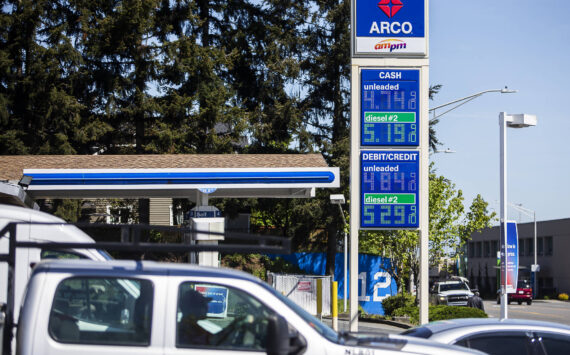By Morf Morford, Tacoma Daily Index
Something very strange is happening in our biggest cities. From Seattle to Shanghai to San Francisco – and many more – people are voting in the most important way – with their feet.
Remote work is leaving its mark on our urban landscapes. In Bellevue recently, for example, the region’s two biggest employers — Amazon and Microsoft — have signaled that “Build it and they will come,” the old normal, is no longer working.
According to one recent study, more than 7.9 million Americans work exclusively from home. Far more than that number work in a hybrid mix of home/office/remote situation. That’s about double the number from way back in 2005.
To put it mildly, this shift is creating chaos when it comes to transit, zoning and urban and corporate planning.
Centralized and clearly defined workplaces have been defining features of our economy for a few centuries now – since the emergence of the Industrial Age in the late 18th Century. And, most of us, until the past few years, had a (relatively) clear sense of work/life balance and where and when “life” and “work” took place.
The un-commute
Besides blurring the boundaries between work and home, on a larger scale, land use laws and local governments are attempting to make sense of, respond to, prepare for, and just maybe accommodating, if not facilitating remote work.
Looked at objectively, remote work is to almost everyone’s advantage.
Who among us would miss the parking/traffic nightmares that most of the world’s cities have become?
Managers and companies need to reconsider their dogmatic traditional fears that remote work will impede labor productivity, gender parity in the workplace, and the near-sacred position of cities in our collective psyches.
And pop culture expressions.
The concrete canyons of urban centers have been the location of crimes, intrigue and prosperity for generations.
And a sign of success and sophistication on a global scale.
But is the usual city-scape losing its appeal?
Taller isn’t always better
In 1982, the tallest building in China was Shanghai’s 24-story Park Hotel, completed in 1934. It’s an art deco monument, but the country’s ambitious developers and political leaders viewed it (or at least its height) as a symbol of China’s lower status in the bigger-is-better competitive framework of modern cities.
To address this issue, Shanghai built three immense skyscrapers in a tight cluster.
The last of these to be built, the 632-meter (2,073-foot) Shanghai Tower, was completed in 2015 and is the world’s second-tallest building.
Shanghai’s modern skyline came to symbolize China’s rise.
Other cities took the hint. China now has 2,928 buildings taller than 492 feet, 953 higher than 656 feet and an astounding 102 skyscrapers above 984 feet.
In all three categories, it leads the world.
In addition, it is home to thousands of look-alike 20-story residential high-rises.
These are stunning from a distance. But up close they are pedestrian-unfriendly to a degree few of us could have imagined.
These shadowed, barren, look-alike neighborhoods make Chinese cities indistinguishable.
Besides being expensive to build, these building are absurdly expensive to maintain.
The poor quality of high-rise construction, fire safety concerns (most Chinese fire departments aren’t equipped to handle a high-rise fire), noise complaints and water pressure issues make living in those buildings challenging at best.
And, even if taken care of, these buildings won’t last long. Most urban designers suggest a life span of 30 to 40 years for condominiums.
That’s how long it is projected for a shiny new high-rise to become a vertical slum.
As one builder told me, “Condominiums just don’t appreciate worth a d#$@”.
In a market of rapidly, if not explosively growing real estate values, non or even negative value evaluation is peculiar at the very least.
China’s cities, like many others around the world, are moving toward a slower – and lower – and more livable urban landscape.
New Chinese guidelines require that at least 70% of the housing must be six stories or less and built using low-carbon construction materials and methods, and outfitted with low-carbon appliances.
When I lived in China many years ago, only buildings taller than six stories could have elevators.
Walkable and livable landscapes
And most cities are attempting to design by the “15 minute rule” – that most basic daily requirements and activities are within a 15 minute walk.
This is a major philosophical shift from urban design wrapped around cars, parking complexes and high-rise buildings — products heavily subsidized to boost growth — that will be de-emphasized in favor of amenities and architectural features (like a lush green canopy and pedestrian friendly areas like pocket parks) that may not earn immediate revenues, but would enhance city, family and individual life.
And just might make an urban landscape feel like home. Now that sounds like a city we could all like.





